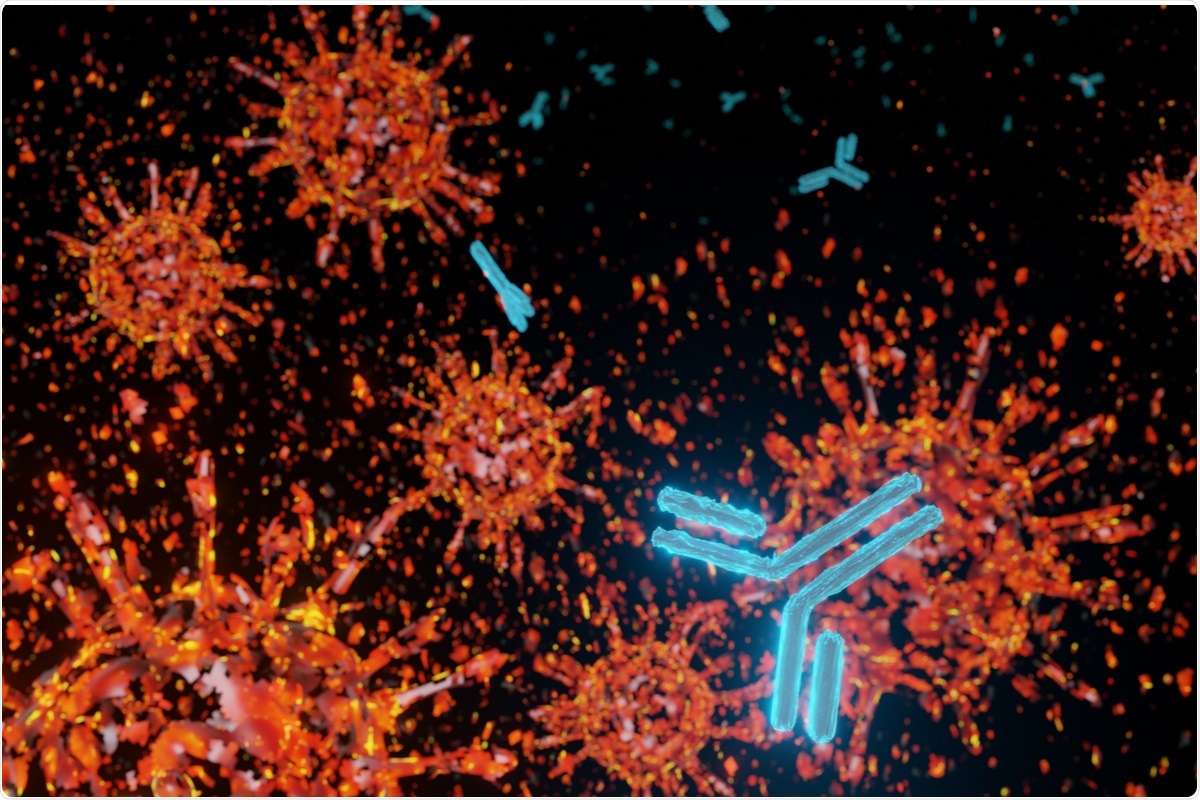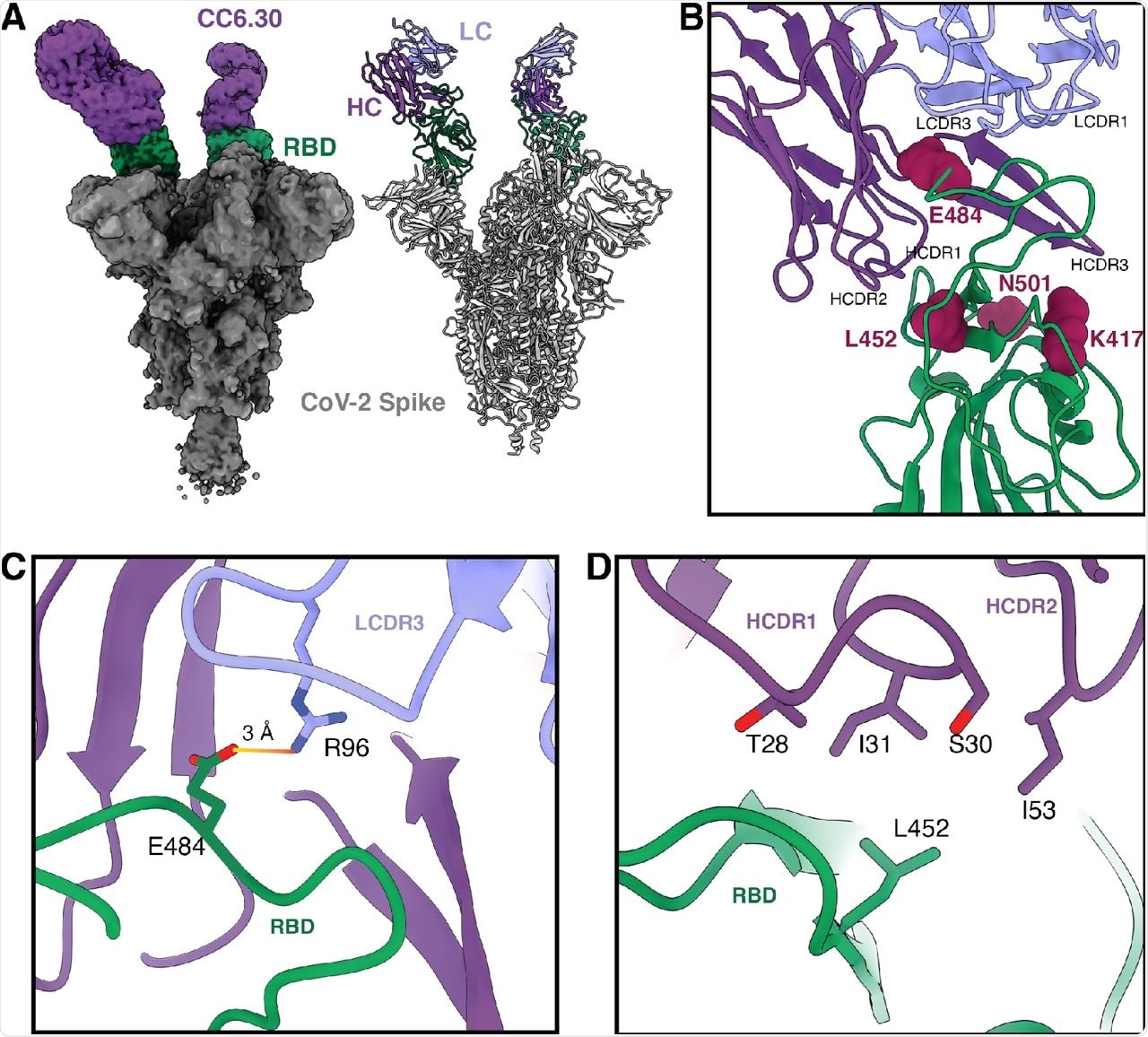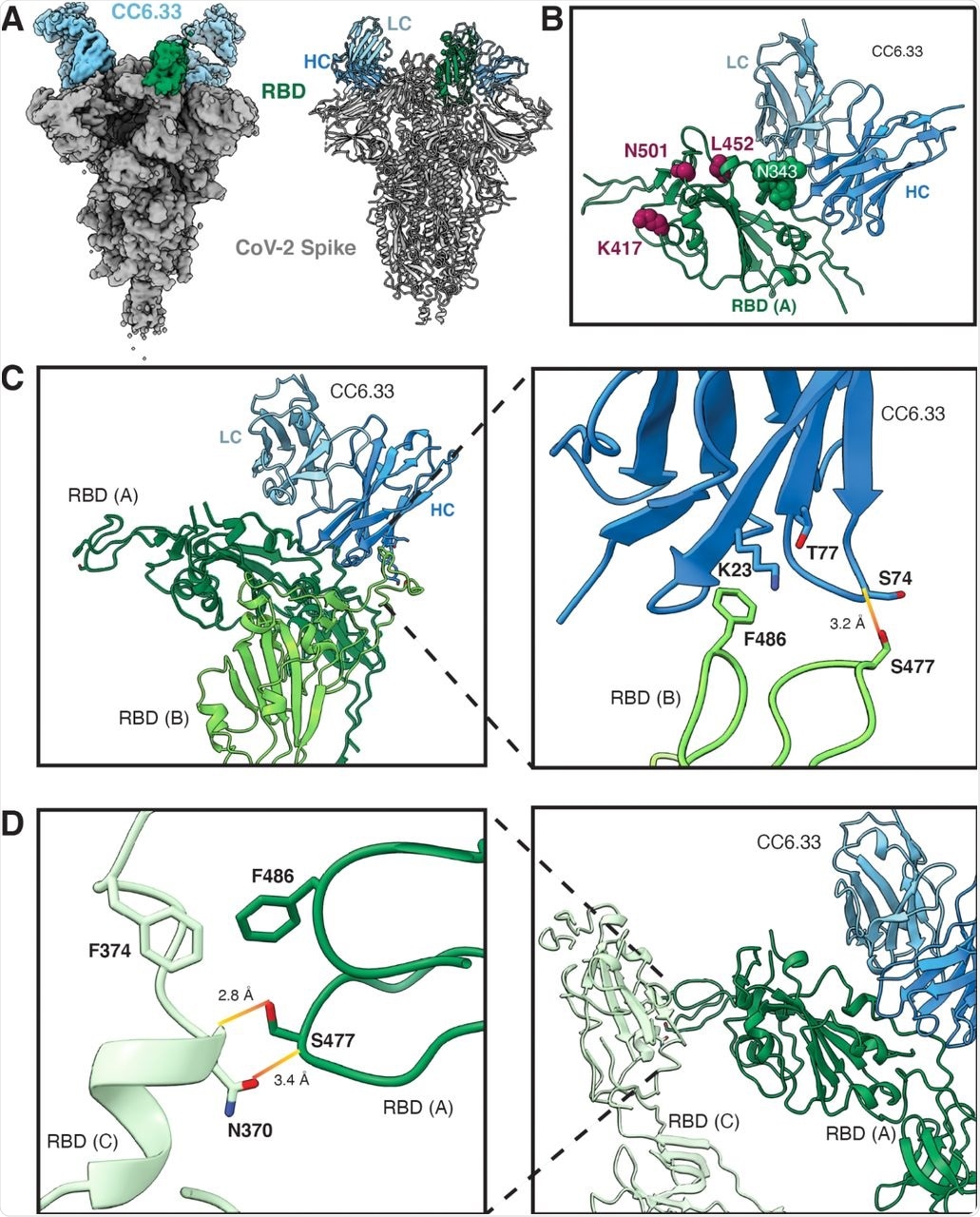With the widespread and rapid transmission of the severe acute respiratory syndrome coronavirus 2 (SARS-CoV-2), the number of hospitalizations is expected to rise, though the trajectory remains uncertain.
A new study published on the bioRxiv* preprint server describes the potential of engineered neutralizing antibodies (nAbs) with a high affinity for the binding epitopes, thus enhancing their potency while reducing the possibility of antibody escape.

Study: Engineering SARS-CoV-2 Neutralizing Antibodies for Increased Potency and Reduced Viral Escape. Image Credit: LuXiFeR Bowlo / Shutterstock.com
Background
The presence of nAbs is a consistent correlate of immune protection, and several different nAbs have been found to bind to several distinct epitopes on the viral spike. However, the immunodominant antigen is the spike's receptor-binding domain (RBD).
As a result, recombinant nAbs are being synthesized to help treat coronavirus disease 2019 (COVID-19) and mitigate the severity of the disease, as well as prevent symptomatic and severe disease. These are particularly important in patients who are poor responders to current COVID-19 vaccines, helping to neutralize and clear the virus and to prevent hospitalizations.
One prominent obstacle in the use of neutralizing monoclonal antibodies (mAbs) is the abundance of mutations in the nAb epitopes. These mutations have given rise to several different SARS-CoV-2 variants, along with the emergence of immune escape mutations. Today, thousands of viral variants with synonymous and non-synonymous mutations have been reported.
Many of these SARS-CoV-2 variants have been described as variants of concern (VOCs) because they are more transmissible, more pathogenic, show immune evasion properties, or a combination of such changes. Immune evasion refers to the capability of these new strains of SARS-CoV-2 to evade detection by the host immune system or to the ability to avoid neutralization by mAbs induced by the earlier variants of the virus.
To avoid this, several strategies have been formed. One is the selection of nAbs that bind to highly conserved epitopes that mediate crucial functions in the viral life cycle, thus preventing the emergence of mutations that can facilitate viral escape while maintaining viral fitness. Another approach is to use combinations of nAbs that target distinct epitopes, thus preventing mutational escape by making multiple mutations necessary.
Interestingly, the current preprint describes the results of a third strategy. Here, the researchers sought to increase the in vitro affinity maturation of a nAb for its antigen so as to achieve high binding affinity. This helped reduce the degree to which mutational escape is possible.
Study findings
In the current study, the researchers looked at three nAbs to SARS-CoV-2, including CC12.1, CC6.30, and CC6.3323. They first used cryoelectron microscopy (cryoEM) to explore the structures of two of these antibodies bound to the trimeric SARS-CoV2-2 spike. These antibodies included CC6.30, which targets the RBS-B or Class 2 epitope site, and CC6.33, which targets the Class 3 epitope site, being different from the binding site for the host cell angiotensin-converting enzyme 2 (ACE2) receptor.
CC6.30 has a binding affinity for the RBD of s1.7 nM in the immunoglobulin G (IgG) format and competitively inhibits ACE2. Conversely, CC.6.33 has an RBD-binding affinity of 80 nM. These antibodies were subsequently engineered for affinity maturation using a customized rapid affinity maturation strategy known as SAMPLER.

Structural characterization of nAb CC6.30.

Structural characterization of nAb CC6.33.
All enhanced (e) nAb variants, namely, eCC12.1, eCC6.30, and eCC6.33, bound SARS-CoV-2 RBD with 45-fold higher affinity than the parental nAbs, on average, ranging from five-fold to about 270-fold. The gain was due to lower rates of dissociation in every case.
The researchers found that engineering the nAbs for higher binding affinity using directed mutations led to an increase in the potency of neutralization in vitro up to a plateau at around 10 ng/mL for IgG. Beyond this, affinity maturation was not useful for improving potency for ACE2-competitive anti-RBD nAbs like CC12.1 or CC6.30.
The result of enhanced binding affinity was, firstly, a greater breadth of neutralization that allowed the nAbs to neutralize the earlier variants of SARS-CoV-2 as well as the VOCs, despite the latter containing mutations near the binding epitope of the nAb in question. For instance, the K417T/N mutation, detected in both the SARS-CoV-2 Beta and Gamma variants, abolished RBD binding to CC12.1.
This mutation occurs in the middle of the CC12.1 epitope. However, the engineered eCC.12.1 nAb variants, eCC12.1.4 and eCC12.1.7, were broadly neutralizing against all variants. This was due to the compensatory effect of the higher binding affinity for the wild-type spike protein, which overcame the loss of contact at the K417 residue to maintain high binding affinity and thus neutralize these VOCs.
These variants showed affinity maturation against the ancestral variant of SARS-CoV-2 without specific selective pressure to allow for mutations present in the VOCs. With saturated mutagenesis screening, the increase in affinity maturation led to a lower number of potential antibody escape mutations and not just a shift in the mutations to different positions.
The engineered antibodies could not prevent escape mutations altogether, with these variants still showing a small drop in neutralizing potency against the D420K mutation. None of the eCC6.30 variants could neutralize or bind to the SARS-CoV-2 Beta and Gamma variants with the E484K mutation.
With the Omicron variant, which has multiple RBD mutations especially within the class 1 antibody epitopes, only one of the CC12.1 variants showed significant neutralizing activity, though reduced 25-fold. The Omicron variant was not neutralized by parental or engineered variants of CC6.30 or CC6.33 nor to the parental and most of the engineered CC12.1 variants. This was attributed to the E484K and Q493K mutations that remove several important interactions between the Omicron RBD and antibody.
With CC6.33, the inability to neutralize Omicron may be due to steric hindrance by the G339D mutation within the binding epitope, as well as other conformation-altering mutations that abolish the required conformation in the adjacent N343 glycan loop.
Implications
“This finding illustrates the value of affinity maturation in the context of natural infection in that the generation of a diverse set of related antibodies, as was done here in vitro, will likely generate some antibodies able to bind to and act against many different viral variants, including those with multiple mutations as for Omicron.”
The researchers suggest that one reason why many nAbs with clinical potential showed poor neutralizing potency against Omicron is that they were typically selected early in the course of the COVID-19 illness and thus lack affinity maturation.
The in vivo protective efficacy of these engineered nAbs was also increased, with eCC12.1.6 effectively preventing Beta infection but not CC12.1. Similarly, eCC6.33.3 was linked to better control of viral infection, with a 2 mg dose showing the ability to prevent infection altogether. At a dose of 500 μg, lung viral titers were reduced 100,000-fold relative to the controls.
This is explained by the higher threshold for cessation of improved neutralization. CC6.33 neutralizes 80% of viral particles; however, its engineered version shows plateauing at 100%. The findings thus confirm earlier predictions that higher affinity is linked to higher neutralization, which is linked to better protection against infection and disease.
An unexpected benefit of the experiment was the induction of a wide range of nAbs similar to each other. This led to the production of one variant of CC6.30 that was superior in its pharmacokinetic behavior to the parental nAb.
Overall, engineered nAbs with a high affinity for the target antigen caused a steep improvement in the potency and breadth of neutralization by restricting the number of escape mutations that were possible. The number of somatic mutations in mAbs isolated at later time points of infection are typically greater than in variants of the same nAb clones isolated at earlier time points. This process is called affinity maturation and increases the breadth and potency of neutralization.
In the engineering process used here, it is clear that multiple variants of a single nAb can be produced with higher binding affinity but with different potency of neutralization against different viral variants. The various engineered nAbs also show binding trajectories that agree with those achieved via multiple vaccine doses using a single soluble protein antigen through expansion of the B-cell lineage.
“These data support the current approach of boosting with the original SARS-CoV-2 vaccine formulation, as continued expansion of B cell lineages and further improvements in affinity can help expand the response to cover new VOCs. It also will help to expand the pool of memory B cells that may be cross-reactive to new vaccine formulations when they are eventually developed.”
*Important notice
medRxiv publishes preliminary scientific reports that are not peer-reviewed and, therefore, should not be regarded as conclusive, guide clinical practice/health-related behavior, or treated as established information.